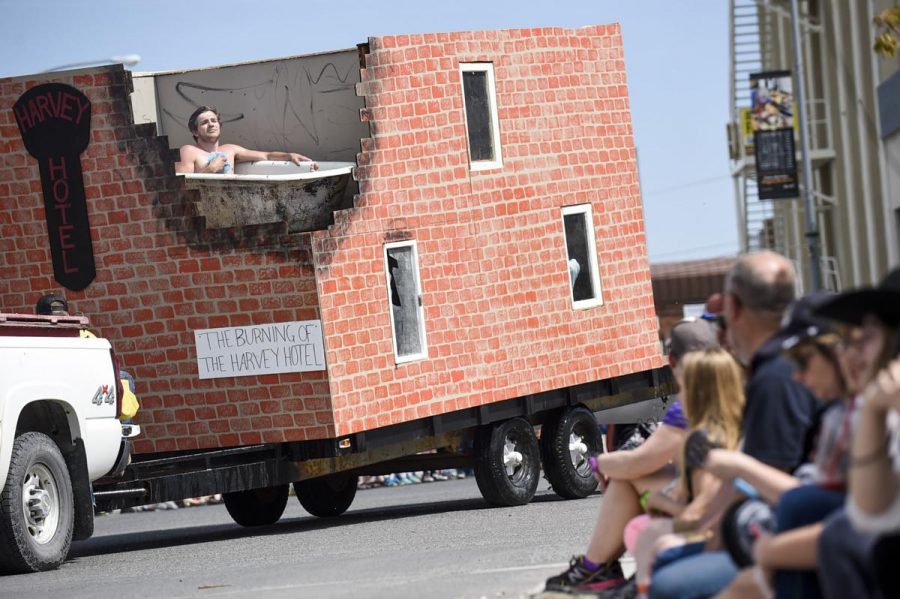Controversial No More
What Helena Schools Have Done to Make the Vigilante Day Parade Better
May 7, 2018
Before the decorated trailers and colorful costumes, Vigilante Day in Helena was uncontrolled chaos. The day sparked a decade-long disagreement between both students and school faculty. Around the beginning of the 1900’s, according to helenahistory.org, Seniors and Juniors held a tradition that welcomed violence and mayhem: “The Senior-Junior Fight.” The two classes would each raise a flag to the top of a flagpole and do whatever it took to seize and destroy the flag opposite to theirs.
It didn’t take long for the School Board to arrest the tradition, however, because students with bloody faces and broken jaws were obvious indications that the day off was not being observed as intended. The faculty began punishing students involved in the action and removed the flagpole from the school grounds. But, students fought their way around it. They spread the fight into town, which caused property damage and outrage from the public. Quickly, the School Board did their best to find peaceful alternatives for the kids.
“Old Clothes Day” at school didn’t work. The annual “Senior-Junior Baseball Game” was not very popular, either. Finally, students and administrators came together and found a tradition that is still loved and cherished today: “The Vigilante Day Parade.”
What started as a battle between a school and their students is now a happy annual parade celebrated by the entire city, for the most part. Last year, the Parade was criticized by many Helenians after a float that featured an “inaccurate” and “stereotypical” portrayal of Native Americans. But not all people viewed it as something sinister, but rather as indicative of the students’ lack of education on the topic.
Jackson Keller, a senior at Helena High, thinks that the problem could’ve been a product of the students just trying to put on a show for the crowd. “I feel like they had intentions of trying to make it more entertaining and it just rubbed off as racism to [the] observer despite the fact that one of the float members was Native American.” According to the Independent Record, the educators responsible for screening each float simply did not have time to properly inspect each one.
This year, the School Board promised to do more in the float screening process and try to educate the students in making each float more historically accurate. Superintendent Jack Copps stated that he personally visited each float before the scheduled day of the parade. As a result, many people seemed to be much more content this year than last.
Even though the parade this year featured only one float dedicated to Native American history, many people were much happier with its representation of history. Junior Ben Ries-Roncalli noticed a difference in emotion between the 2017-18 parades, saying, “I definitely saw people’s mixed reactions last year, and I felt like I could hear them criticizing some of the floats. But skeptics this year seemed to have liked what they saw.” “Nevertheless,” Ries-Roncalli says, “I don’t think the parade will see many more major problems in the future and I don’t believe this tradition is going anywhere, either.”


